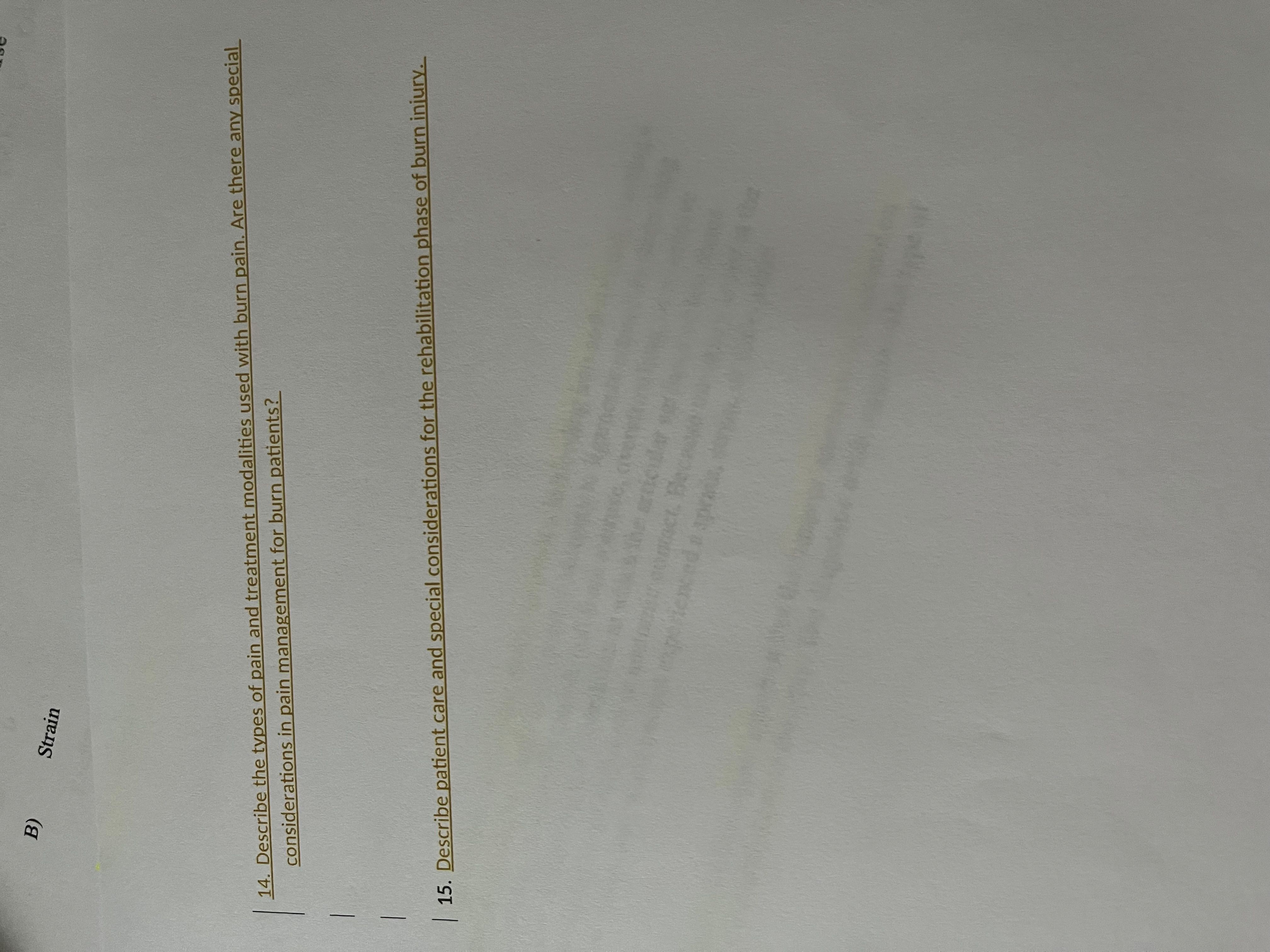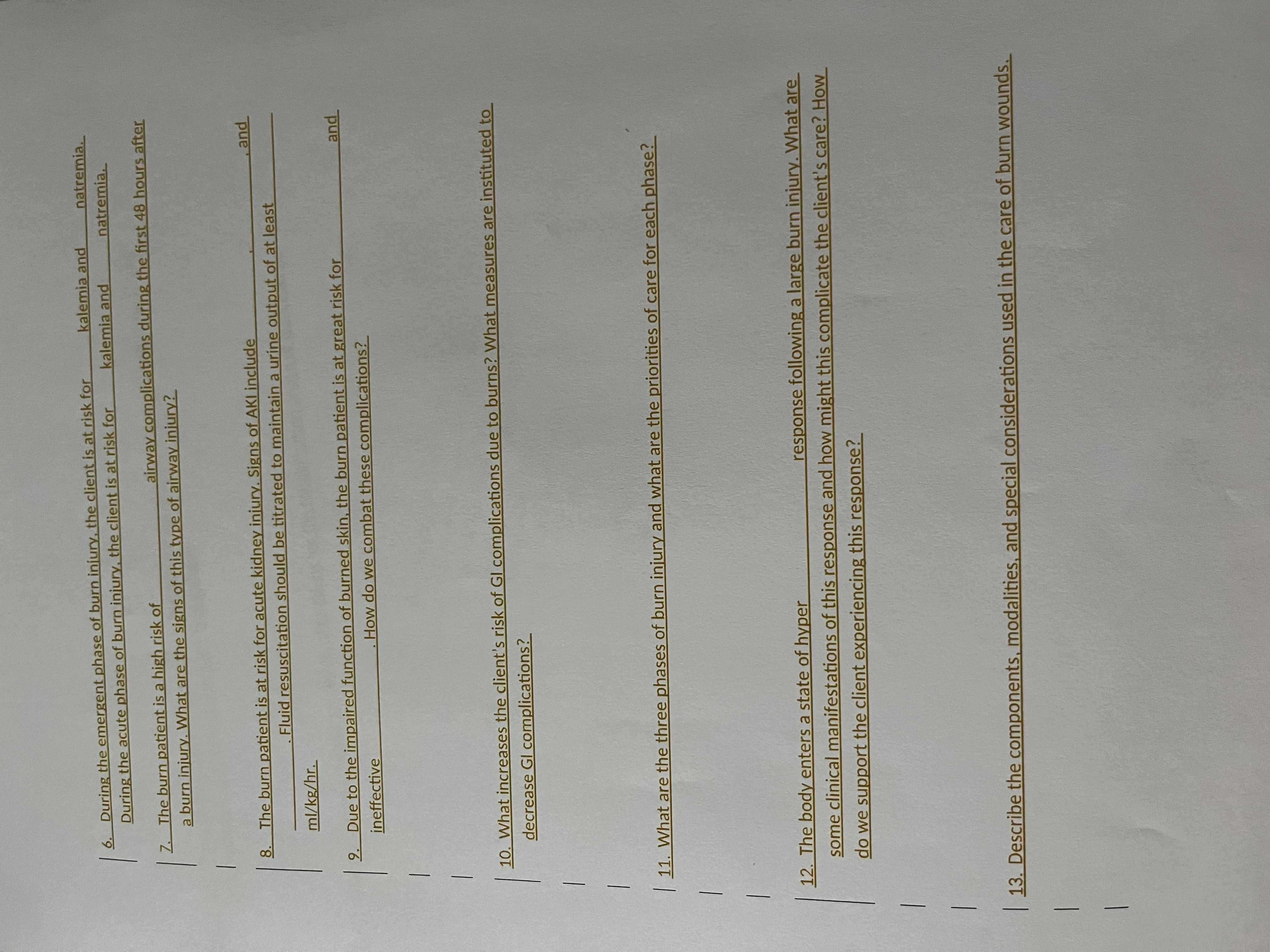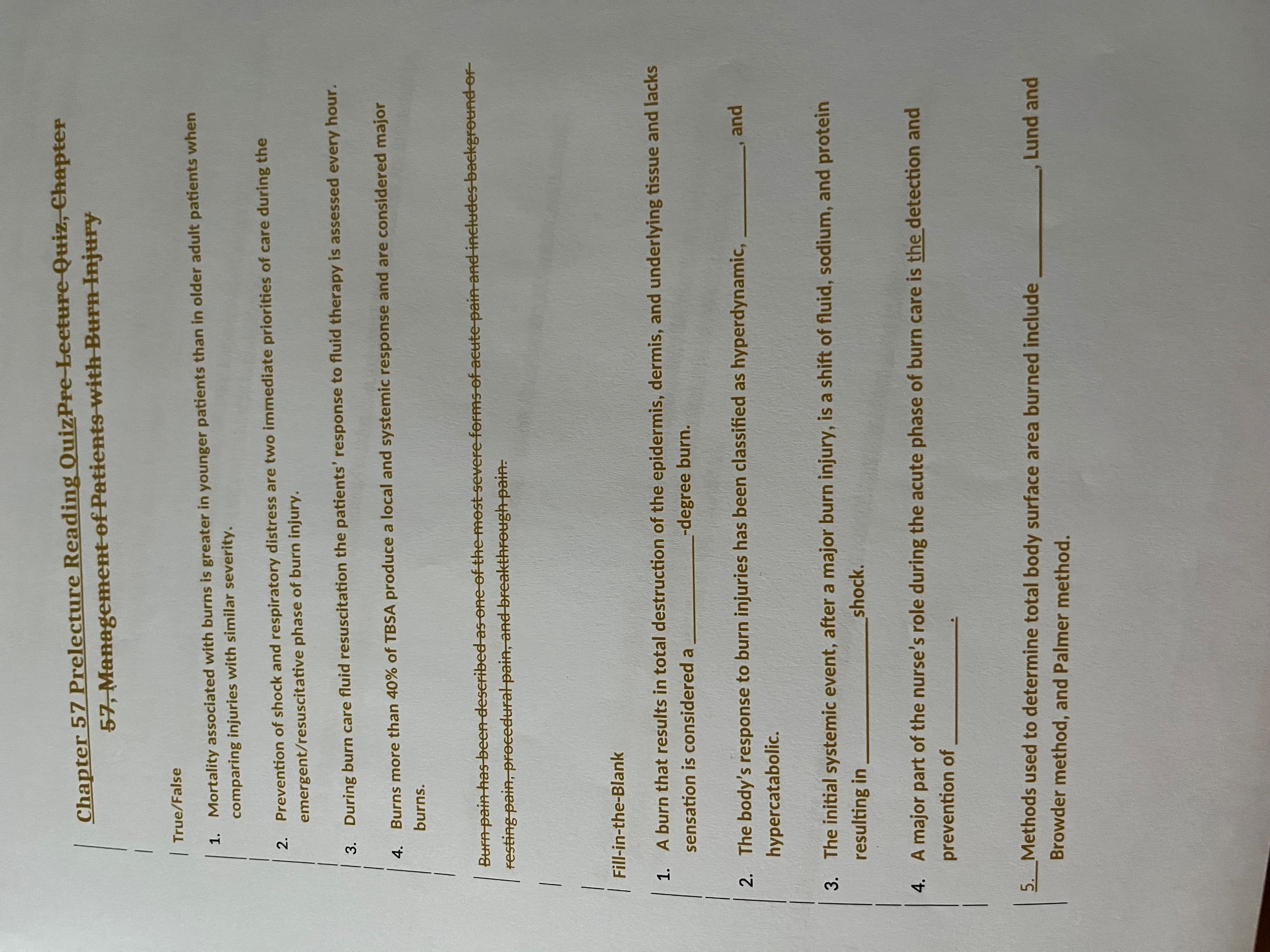Home /
Expert Answers /
Nursing /
b-strain-14-describe-the-types-of-pain-and-treatment-modalities-used-with-burn-pain-are-there-an-pa552
(Solved): B) Strain 14. Describe the types of pain and treatment modalities used with burn pain. Are there an ...



B) Strain 14. Describe the types of pain and treatment modalities used with burn pain. Are there any special considerations in pain management for burn patients? 15. Describe patient care and special considerations for the rehabilitation phase of burn iniury.
6. During the emergent phase of burn iniury, the client is at risk for kalemia and natremia. During the acute phase of burn iniury, the client is at risk for kalemia and natremia. 7. The burn patient is a high risk of airway complications during the first 48 hours after a burn iniury. What are the signs of this type of airwav iniury? 8. The burn patient is at risk for acute kidney injurv. Signs of AKI include and Fluid resuscitation should be titrated to maintain a urine output of at least . 9. Due to the impaired function of burned skin, the burn patient is at great risk for and ineffective How do we combat these complications? 10. What increases the client's risk of GI complications due to burns? What measures are instituted to decrease GI complications? 11. What are the three phases of burn injury and what are the priorities of care for each phase? 12. The body enters a state of hyper response following a large burn injury. What are some clinical manifestations of this response and how might this complicate the client's care? How do we support the client experiencing this response? 13. Describe the components, modalities, and special considerations used in the care of burn wounds.
True/False 1. Mortality associated with burns is greater in younger patients than in older adult patients when comparing injuries with similar severity. 2. Prevention of shock and respiratory distress are two immediate priorities of care during the emergent/resuscitative phase of burn injury. 3. During burn care fluid resuscitation the patients' response to fluid therapy is assessed every hour. 4. Burns more than of TBSA produce a local and systemic response and are considered major burns. Fill-in-the-Blank 1. A burn that results in total destruction of the epidermis, dermis, and underlying tissue and lacks sensation is considered a -degree burn. 2. The body's response to burn injuries has been classified as hyperdynamic, , and hypercatabolic. 3. The initial systemic event, after a major burn injury, is a shift of fluid, sodium, and protein resulting in shock. 4. A major part of the nurse's role during the acute phase of burn care is the detection and prevention of 5. Methods used to determine total body surface area burned include Lund and Browder method, and Palmer method.
Expert Answer
Burn pain can be categorized into two main types: acute pain and chronic pain. 1. Acute Pain: Acut...